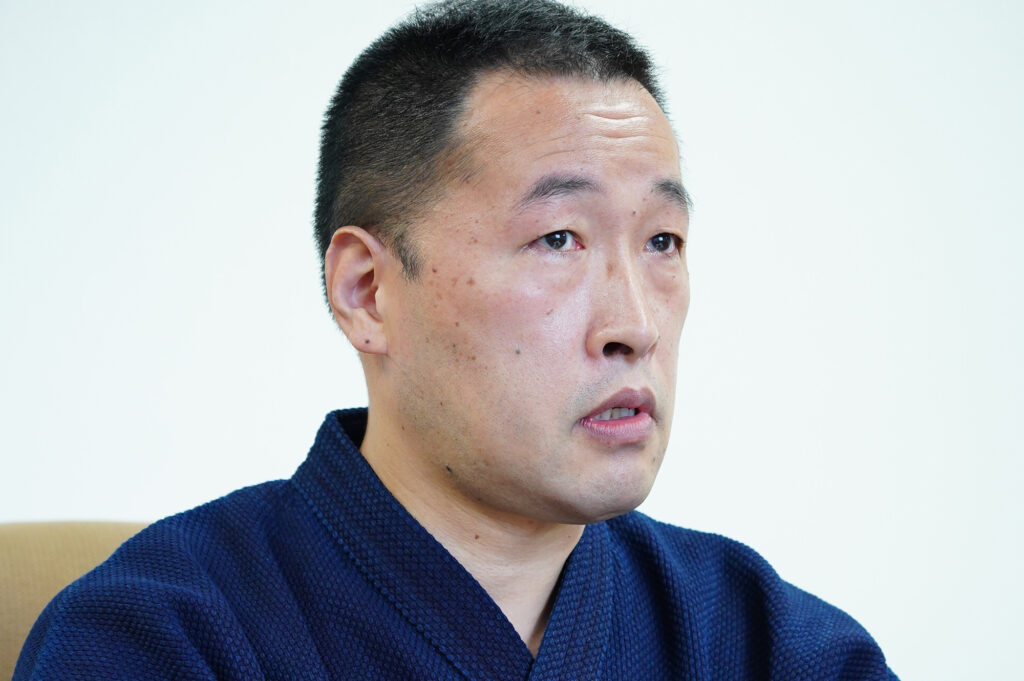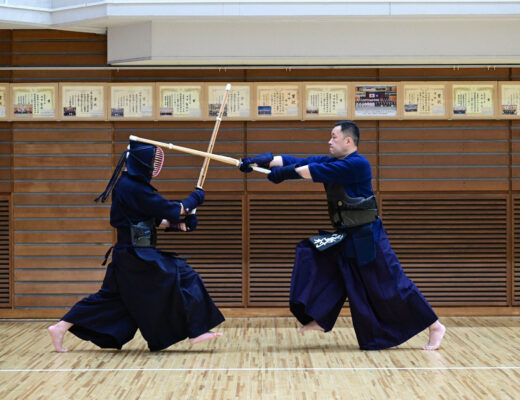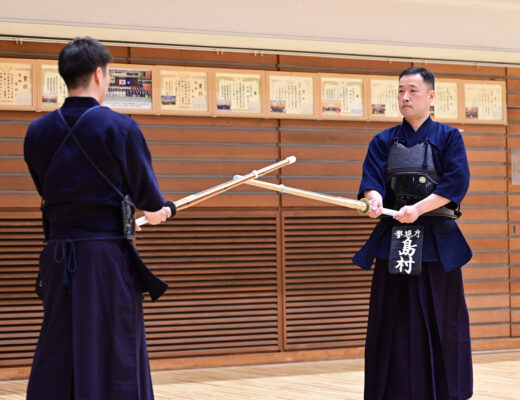2022.10 KENDOJIDAI
Translation: Pepijn Boomgaard
Photo: Sasai Takamasa
When Shimamura Sensei was still a young Tokuren member, he won by focusing on openings in his opponent’s movements. By becoming aware of these gaps, he learned how to break down his opponent and not letting opportunities get away from him. Perhaps capturing these opportunities is what is necessary to reach a high rank in Kendo.
Shimamura Tsuyoshi, 8th Dan

I think that an opening exists of two elements: a temporal element (time) and a spatial element (distance). In Kendo, there is the term “three opportunities”, which refers to an opening in Kamae, an opening of the mind, and an opening in movement. I believe that with the correct time and distance, we can use these openings to attack successfully.
After graduating from Tokai University Sagami High School, I joined the Metropolitan Police Department. In the beginning, I had difficulty landing strikes in practice and matches. When I did compete, I often lost. When I thought about how I could land strikes on players my age as well as on my seniors, I realized that I was not seizing the opportunities. Even if I was ready to attack, I had not broken down my opponent yet. Instead, they might be drawing out my attacks. The instructors at the Metropolitan Police Department pointed out that attacking only out of your own convenience is not good. One mustn’t attack when there is no opening. If there is no opening, you must break them down or confuse them.
After I realized this, I started thinking about the dialogue one has with their opponent (either with their Kensaki or their hearts). I was struck many times in practice. What finally made me realize what it means to seize an opportunity was when I started practicing Debana-waza.
Of the three opportunities, the opening in Kamae and opening of the mind are very hard to detect in players of the same age and ability. However, openings in movement always appear, even with highly skilled practitioners. That’s why I felt it was necessary to first study openings in movement.
I often used Debana-waza, but after I started focusing on hitting when my opponent is about to move, there was a match where I scored Ippon when my body moved unintentionally. My teachers told me that was a good opportunity and I realized that if I manage to attack in that situation, I can win.
Little by little, I began to get a feel for Debana and became able to consistently use it. By training to seize an opening in movement, we can also learn how to break down the opponent, use Seme, and synchronize our Ki with the opponent’s. These are indispensable elements for higher ranks, so it was a very meaningful learning experience for me.
Even now, I still see Debana as one of my strong techniques. People who I’ve faced many times are wary of my Debana-waza, but I would like to devise new ways to use Seme to overcome that as I continue studying.
Seizing opportunities through correct Kamae
The rest of this article is only available for Kendo Jidai International subscribers!




